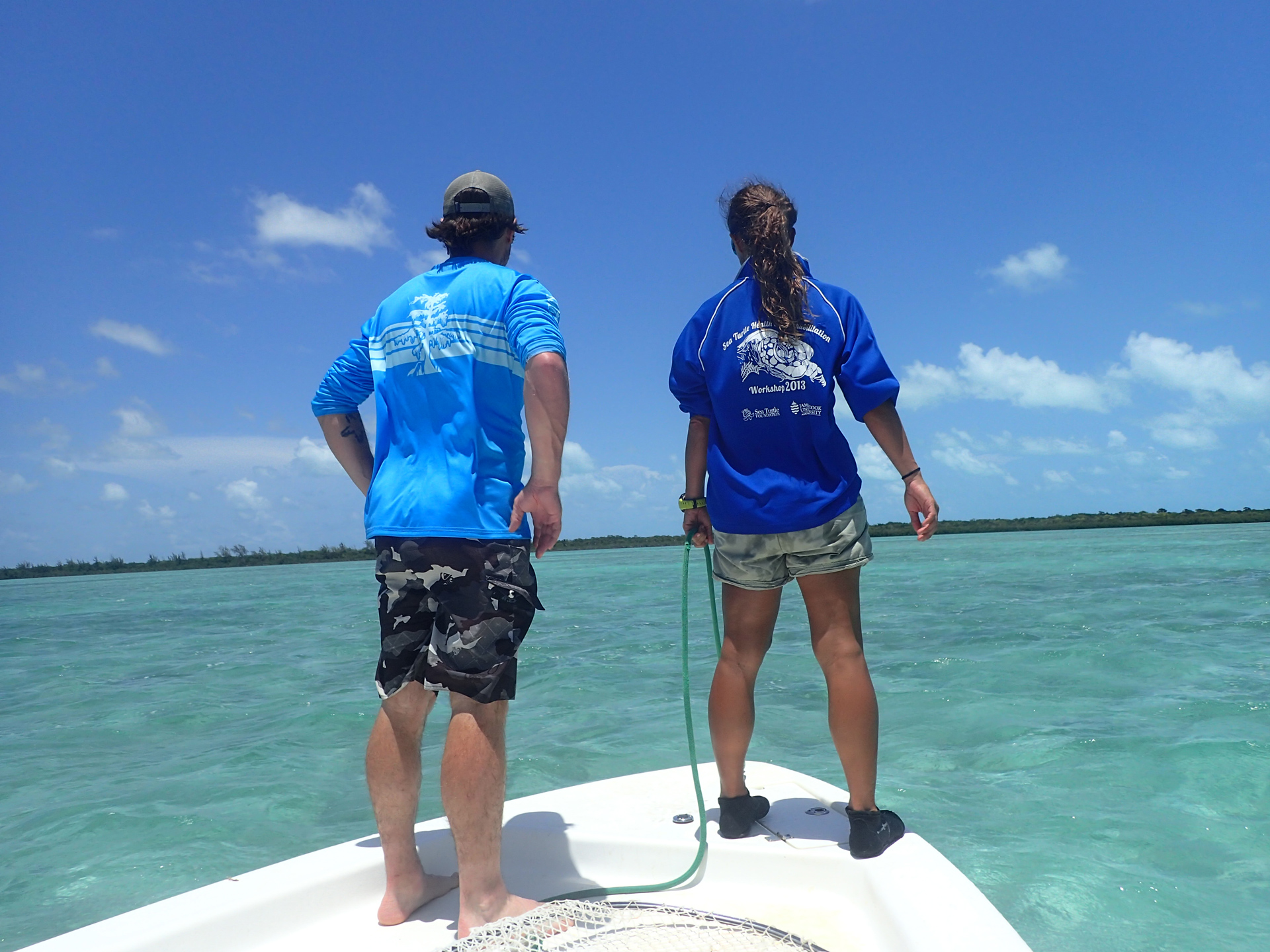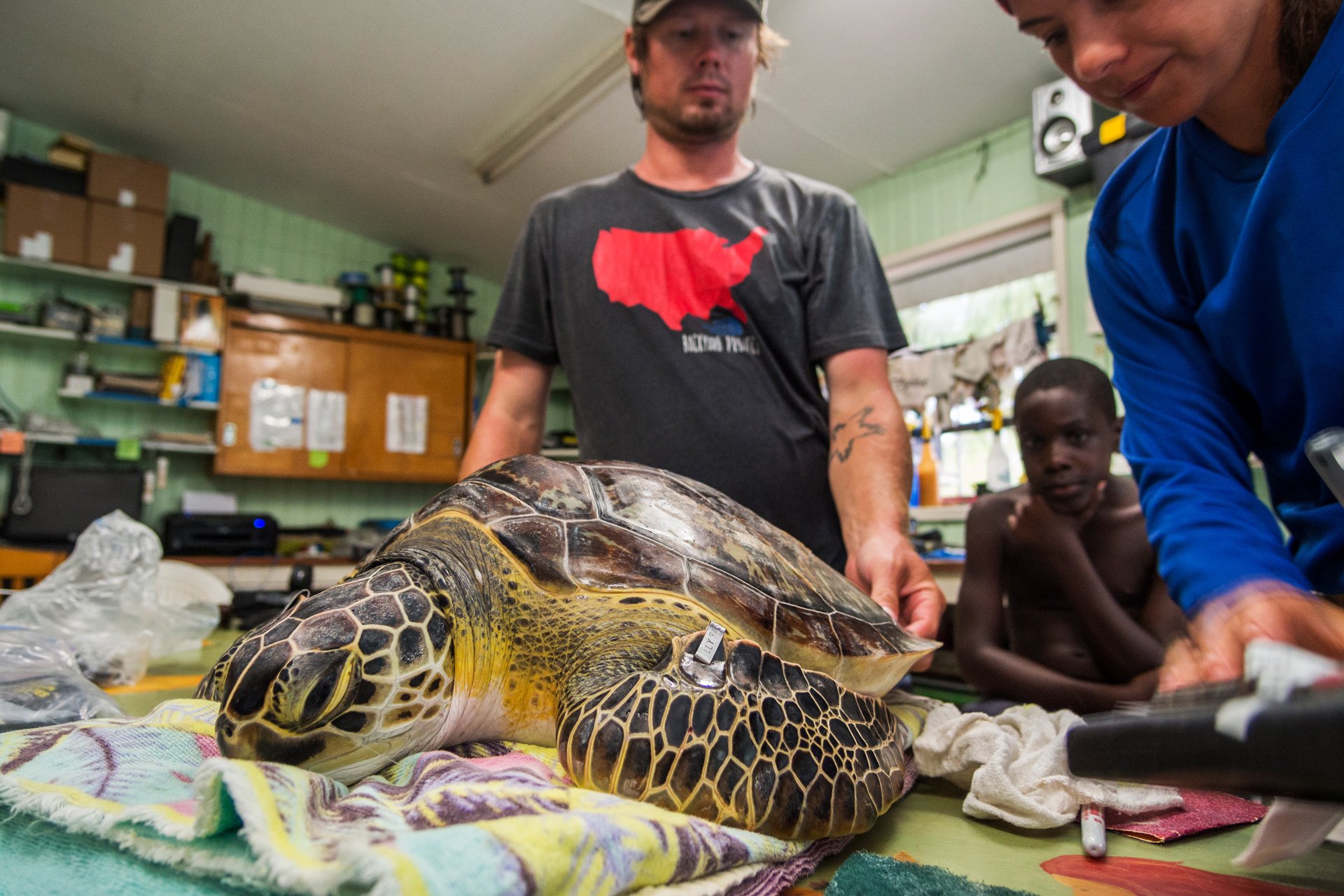Turtle Cowboys

Photo © Anthony Gillis
‘Going left!’
‘Now right!’
‘Crossing in front of the boat!’
‘A bit of speed!’
‘Wait now, slow down…’
Then … splash!
Crystal-clear water rushes past my head as I reach forward to latch onto the juvenile green sea turtle Chelonia mydas swimming only a foot in front of me. As I grab hold of it and kick to the surface, it takes every bit of my strength and concentration to not scream out for joy or do a little underwater dance. I have to remind myself, ‘It’s not in the boat yet…’
Upon breaking the surface and gulping for air, I’m met with jubilation and cheers from my team mates on the boat. ‘He got it!’
And that, my friends, is how you rodeo a turtle.

Photo © Mariana Fuentes
Diving in headfirst after a green sea turtle wasn’t something I thought I’d be doing a year ago, much less ever in my lifetime.
My year as the outreach coordinator for the Bimini Biological Field Station, known also as the Shark Lab, has provided me with some amazing opportunities to grow exponentially as a researcher, enabling me to immerse myself in the world of shark science and tropical marine ecology. As past experiences go, I’ve focused more on sea turtle research and conservation than I have on sharks. Yet here I float, just a few kilometres from the Shark Lab and a few hundred metres offshore from South Bimini in The Bahamas, with a juvenile green sea turtle in my hands and a smile plastered on my face.

Photo © Anthony Gillis
This turtle rodeo, along with several others over the past two weeks, is part of a sea turtle habitat and ecology project being led by Dr Mariana Fuentes of Florida State University, in collaboration the Shark Lab and with funding from the Save Our Seas Foundation. The aim of the project is to gain insight into the movements of local juvenile green sea turtles.

Photo © Eugene Kitsios | Bimini Biological Fieldstation Foundation - Sharklab
Once the turtles have been captured, we work them up by taking measurements and skin samples. We then attach an acoustic transmitter to the marginal scutes of the turtle’s shell. These tags, in tandem with the receiver array established by the Shark Lab, will provide insight into the habitat use and preferences of the 44 turtles we’ve attached them to. We’ve also collected about 60 skin biopsies and surveyed 57 different habitat stations in order to understand why the turtles are selecting certain habitats around Bimini.

Photo © Eugene Kitsios | Bimini Biological Fieldstation Foundation - Sharklab
Dr Fuentes’ collaboration with the Shark Lab also opens up the opportunity to gain invaluable insight into predator–prey interactions between turtles and sharks around Bimini.
While I’m still wrapping my head around the fact that I’ve now ‘rodeoed’ sea turtles, I’m excited to consider the potential that this project holds for the turtle species and Bimini. The information gleaned from it will prove to be priceless for local ecological knowledge and sea turtle conservation. The future is so bright for the turtles of Bimini!
